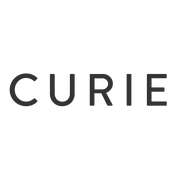The No No List: The Top 5 Skincare Ingredients To Avoid


I started Curie because I believe that what you put on your body is just as important as what you put in your body. Our bodies are covered with pores that allow substances, ranging from the beneficial to the bad, to enter your bloodstream and circulate throughout your body.
According to the Environmental Working Group (EWG), an average of seven new industrial chemicals get approval by the US government daily, and 80 percent of these are approved within three weeks with little or no safety testing. The scariest part? Many of these chemicals are the basic ingredients in cosmetics and personal care products.
As consumers, it's up to us to be vigilant about protecting our bodies from toxic ingredients.
Rule #1: pay attention to ingredient lists, not marketing claims.
At Curie, we only use natural ingredients. But we still thought it would be helpful to go through a few of the top ingredients we think you should give a hard NO to in your skincare routine.
Polyethylene Glycols
PEGs (polyethylene glycols) are petroleum-based compounds that are widely used in cosmetics as thickeners, softeners, and moisture-carriers. Depending on manufacturing processes, PEGs may be contaminated with measurable amounts of ethylene oxide, which the International Agency for Research on Cancer classifies as a known human carcinogen. They also are used to enhance ingredient penetration, which is a good thing for safe ingredients but a very bad thing for toxic ingredients.
Parabens
Parabens are preservatives that prevent the growth of bacteria in cosmetic products. But, they also have estrogen-mimicking properties that are associated with increased risk of breast cancer. These chemicals are absorbed through the skin and have been identified in biopsy samples from breast tumors.
Phthalates
Phthalates help ingredients stick to your skin. Several studies, like this one, have shown that phthalates could impact fetal development in pregnant women. Sometimes they're disguised with acronyms, such as DBP, DEHP, DMP, DEP. There's never a more important time to be mindful of what you put on and in your body then when you're pregnant, so be sure to stay away from this one.
Triclosan
Triclosan is a widely used antimicrobial chemical. Some studies have linked it to unusual hormone activity. One study suggests it could be messing with our microbiomes and day-to-day operations of our genes. Thanks, but no thanks.
"Fragrance"
I've talked about the FDA fragrance loophole before, but the term "fragrance" was created for companies to protect their secret formulas. Meaning, they can contain anything and the manufacturer is not required to disclose it. According to the EWG Skin Deep Database, fragrance mixes have been associated with allergies, dermatitis, respiratory distress and potential effects on the reproductive system. We adhere to a strict set of standards for all our fragrances, described here.
The good news is, there is a lot you can do to protect yourself. One of my favorite resources is the Paula's Choice ingredient dictionary. If I see an ingredient I've never heard of, I can usually quickly find it on her website. Just like packaged foods, you generally want to look for short ingredient lists with words you understand. I encourage you to be proactive—look at the ingredient list, not just the front label, and buy all natural products like Curie whenever possible.


Leave a comment